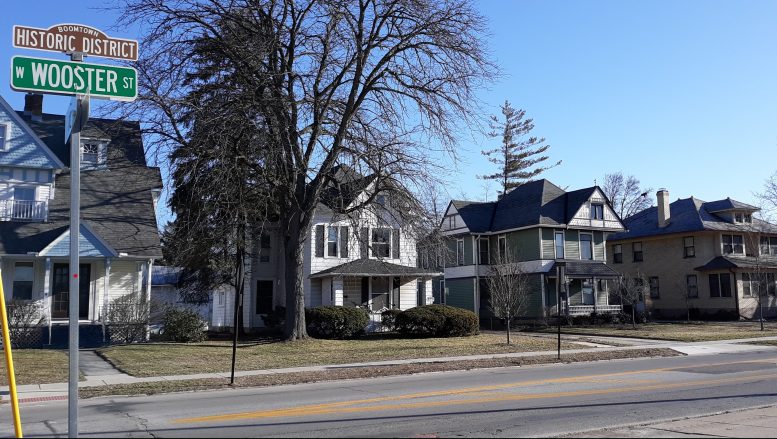By JAN LARSON McLAUGHLIN
BG Independent News
It was a truly historic moment Monday evening – with Bowling Green City Council adopting the often interrupted Historic Preservation Ordinance.
“What a relief. Gosh we are so happy,” said John Sampen, chairman of the Historic Preservation Commission tasked with creating the ordinance.
“We didn’t get everything we wanted,” Sampen said after the meeting. “But this is getting it on the books.”
That has been no small feat. Seven years ago, a similar effort was started but stalled when some large property owners and landlords protested the proposed ordinance. This time around, the commission worked for nearly two years to create the ordinance. The proposal did not receive an endorsement by the city planning commission, and was the topic of multiple marathon meetings by city council.
But Monday evening, it was unanimously adopted as amended by council.
The goal of the historic preservation plan is to help the city retain historically significant structures. It is hoped the ordinance will slow the cultural decline experienced in the older housing stock in the last few decades.
Some historic homes are losing the battle against time and rental transformation. The plan would require property owners in designated historic districts to meet standards when making substantive changes to the exterior of buildings. There would be no rules for the interior of structures.
There are currently 78 cities in Ohio with historic preservation ordinances – including every other university community in the state except Bowling Green. In Athens, Oxford and Perrysburg, the decision for an area to become part of a historic preservation district is made by the city and property owners don’t get a vote. In Kent, owners get one vote for each property they own in a given area.
Who would get to vote – and how many times – was the topic of much discussion by the local commission and city council.
Bowling Green’s historic preservation commission wrote the ordinance to give each property owner one vote – regardless of the number of properties they own. So if a landlord owned multiple homes on a block, they would just have one vote.
But others argued that landowners should get one vote for each unique address they own in a district.
So prior to the ordinance being voted on Monday evening, council member Rachel Phipps offered another version. Since the definition of “owner” seemed to be a headache for the commission and landowners, Phipps suggested that property owners not be restricted to just one vote in a district. At the same time, she suggested that council have the ability to base its decision on the overall survey of the proposed district – not just on the number of votes cast.
Council member Bill Herald objected to a change that wouldn’t require a majority vote for the creation of a district.
“I don’t even want the process to proceed unless there’s a majority,” Herald said.
Council member Jeff Dennis said he supported the proposed change, calling it a “good compromise” since it provides for one vote per property.
Herald and council member Greg Robinette voiced their disapproval.
Phipps also proposed that the maximum daily fine for non-compliance be lowered from $500 to $100. Council member Sandy Rowland questioned whether the lesser amount would be enough to motivate landowners. But all agreed to the lower amount.
Dennis, who said he owns the oldest house among the council members, said he was unsure of the landscaping standards, which require foundation plantings to match the historic period of the structure.
Robinette suggested a “grandfather clause” for landscaping, and recommended that the requirements be fine-tuned later.
“This ordinance is a big step forward for our community,” Dennis said after the meeting. “This legislation will not only help us better preserve and revitalize our older, more walkable neighborhoods, it’s also going to put our city in a stronger position when it comes to attracting residents and outside investment.”

